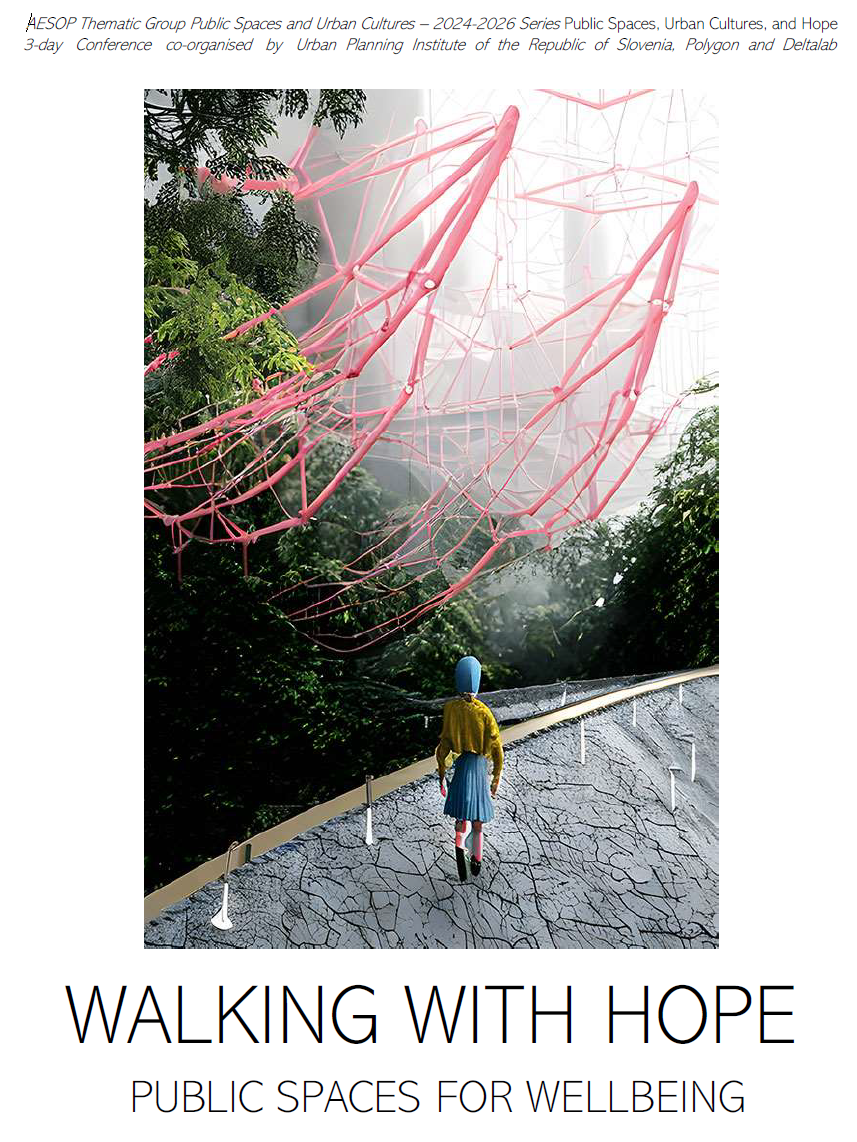
Valentina Gulin Zrnić participated in the conference of the AESOP Thematic Group Public Spaces and Urban Culture, organized by the Urban Planning Institute of the Republic of Slovenia, the Polygon – Centre for Cultural Research and Project Development, and the University of Rijeka DELTALAB – Centre for Urban Transition, Architecture and Urbanism.
The conference took place in three cities – Ljubljana, Rijeka, and Cres, and during the three-day event (16–18 June 2025), held under the title Urban Cultures, Public Space, and Hope, 28 presentations were delivered by colleagues from the fields of urban planning, architecture, urban design, landscape architecture, art, art history, and cultural anthropology.
Valentina Gulin Zrnić:
Walking ethnographies: cultural anthropological steps along Zagreb streets (abstract)
Within the current cultural anthropological project on urban futures, walking and hope have been introduced into urban research both as conceptual frameworks and methodological approaches. Walking is not merely a habitual movement between two locations but it constitutes a way of knowing that creates spatialized, temporalized, cognitive, embodied, affective, contextualized, interactive and responsive experiences which construct our everyday life and subjectivities. Hope is one of many futural orientations, a specific teleoaffect of the „vernacular timespace“, and, much like walking, hope is always in motion, „a tendency, towards something“ (Bryant and Knight), as well as a method of living in indeterminacy (Miyazaki).
This presentation combines theoretical reflections with an emphasis on walking ethnographies as a research technique in cultural anthropology as well as in the boprader fields of the humanities and social sciences. Walking as a method opens up new sets of questions and associations, evokes memories and generates to new urban imaginaries. In walking ethnographies, there is a potential to capture many of the dimensions of human experience while „going along with“ (Ingold) and being in and through urban atmospheres (Pink and Sumartojo).
Presenting various examples, we will walk through the streets and squares of Zagreb immersed in a protest march and religious procession, among colorfully decorated festival streets, or along ruined post-earthquake streets while discussing aspects of affective capital, urban diversity, spatial justice and political subjectivity. This presentation draws upon a decade of doing walking ethnographies and is grounded in current research project “What kind of cities do we want? Contemporary transformations of urban visions, practices and ethics” (NextGenerationEU) at the Institute of Ethnology and Folklore Research in Zagreb (www.citymaking.eu).
